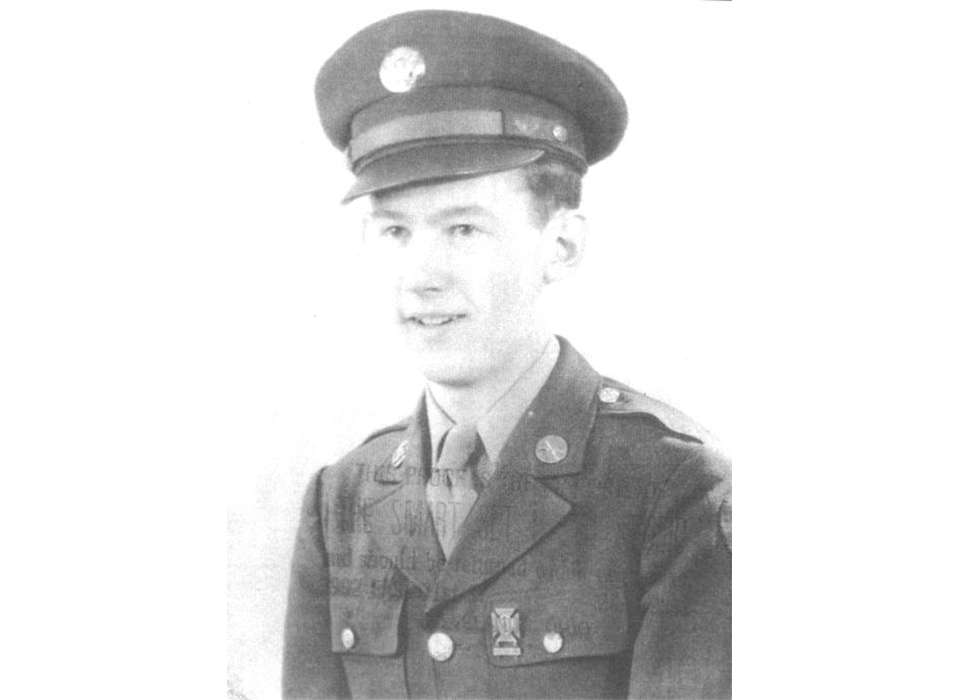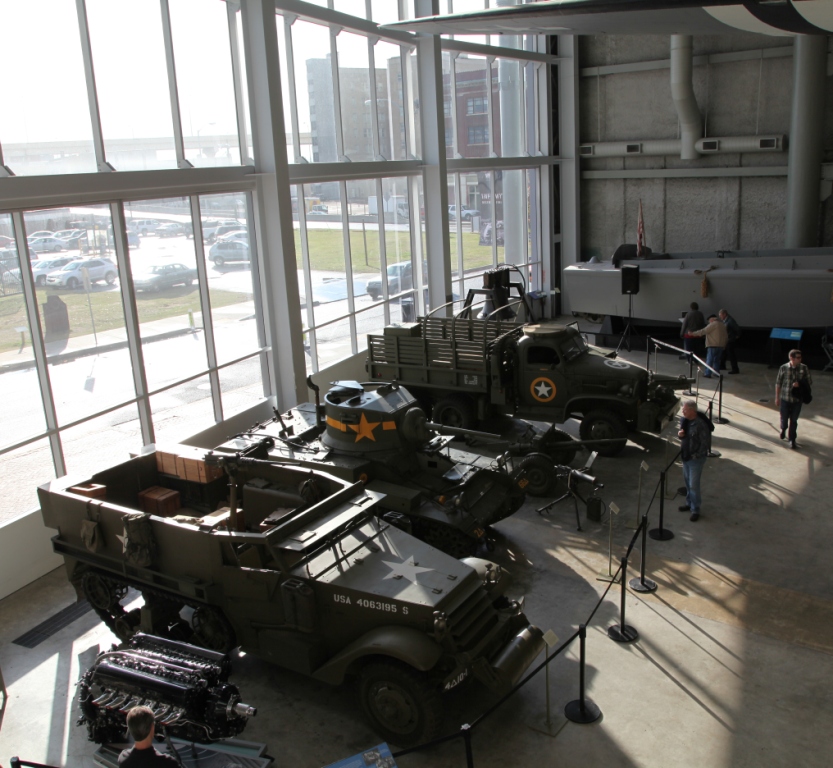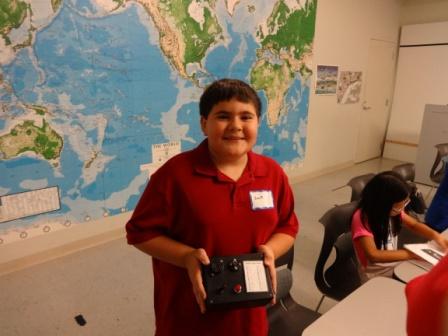Robert Zawada, WWII veteran and former POW, was a Museum volunteer from the beginning, serving from May of 2000 to May of 2011, and earning 1823 volunteer hours. Most of those hours were spent as a “4th floor volunteer,” working with our collection and exhibits department on the Museum’s administrative floor. There, Bob fulfilled many roles. He used his skill as an architect to build models of exhibit cases for floor planning, to create Morse code boxes still in use by our Education Department, and helped to organize our research books in the Collections Department.
“When I remember Bob Zawada, I remember his kind and quiet demeanor, covering his unshakable and determined attitude towards life and projects. He proved to me throughout my work with him that focused kindness and quiet determination were an inspirational way to live and work.”
Lindsey Barnes, former Archivist
Bob started out as an infantryman, but ended up as a radio man on a halftrack. Senior Curator & Restoration Manager Tom Czekanski recalls Bob saying that he got the job of radio man for his halftrack because he knew the phonetic alphabet, “not Morse code, just the phonetic alphabet.” The Museum’s halftrack is even painted with the unit markings of the halftrack Bob was riding in during the Hammelburg Raid, the attempt by a small task force in late March 1945, to liberate a POW camp, where Patton’s son-in-law was being held, 50 miles behind enemy lines.
During the Hammelburg Raid, as part of Task Force Baum, Bob was severely wounded and was captured. Back at the POW camp he and the others had only recently tried to liberate, Bob’s leg was amputated above the knee by a Yugoslav POW surgeon. A week later, on April 6, 1945, the camp was liberated by the Americans. This story and Bob’s full oral history about his service is a part of The National WWII Museum Digital Collections.
Senior Curator & Restoration Manager Tom Czekanski recalls how: “In June 2004, Abe Baum [leader of Task Force Baum, the Hammelburg Raid] was going to come visit for a book signing. We wanted to do something special so we set out a Task Force Baum Living History Corps display. We got the right patches and uniforms and such and we painted the halftrack with Bob's unit. Company A, 10th Armored Infantry Battalion, 4th Armored Division, Task Force Baum, Hammelburg Raid, March 1945.”
Senior Curator & Restoration Manager Tom Czekanski recalled another great story that Bob told about his service. Tom remembered:
Bob had volunteered to be part of the troops sent to form a new division. We would pull 10% of the men from 5 divisions and then fill in with new recruits to make a new division. Normally the 10% sent were the worst troops in the division. Bob said the train ride to the new base was frightening; the rest of the men were just out of control. They got to the new base late and went to bed in barracks. In the morning a sergeant came in, turned on the lights and said everyone up for PT. Someone threw a trash can at him and yelled “*?!*&# you.” No one got up. Bob said he was too scared that if he did they would beat him up later.
In an hour or two, they all got dressed and went to breakfast. This continued for a day or two until everyone's records caught up. In comes an officer with some MPs; they start asking for this guy or that guy. No one speaks. The officer hauls out dog tags and the MPs drag of the suspected trouble makers. By the end of the day half the men in the barracks are gone; they have been replaced by young soldiers right out of boot camp. Next morning the Sergeant comes in, turns on the lights and yells for everyone to get up for PT. The new recruits hit the floor and the rest of the soldiers figure well, vacation’s over and so that's the end of that.
Bob had a really charming way of narrating the often absurd, humorous, or chaotic episodes of military life and even, of combat. There were many moments when no one knew what to do, when everyone was looking toward the other guy, assuming he knew better, when it turned out that he was just as confused. Even when it came to his surrender and capture. Bob often talked about how he wasn’t sure how to surrender. Does one put one's hands over one’s head? He recalled some people waving white cloths? Where did they get those white cloths, he wondered. Even 65 years later, he still had questions about certain aspects of his captivity, left unresolved.
“Bob was always willing to talk, any time about anything. After I did his OH, which was several hours if I recall, he and I would talk regularly when I would visit the 4th floor [where Bob volunteered in our Collections and Exhibits Department]. Any time I saw Bob there, I would stop and spend a few minutes with him, usually talking about the war. His memories of the Hammelburg Raid were incredibly accurate, and always told well.”
Seth Paridon, Digital Content Manager
His outlook and his curiosity carried over into some of his volunteer efforts. Before Hurricane Katrina, he built Morse code buzzer boxes for our Education Department, which we lovingly referred to as “Zawada boxes.”. Ever since they’ve been used to help teach Morse code to Scouts, summer campers and the public. Over a decade later, they still work and are integral to our summer Spy Camp. Bob passed away May 4, 2014, but his memory lives on through his oral history. Bob’s “Zawada boxes” await their next use with a new crop of summer campers.
Kim Guise
Kimberly Guise holds a BA in German and Judaic Studies from the University of Massachusetts Amherst. She also studied at the Universität Freiburg in Germany and holds a masters in Library and Information Science (MLIS) from Louisiana State University. Kim is fluent in German, reads Yiddish, and specializes in the American prisoner-of-war experience in World War II.



